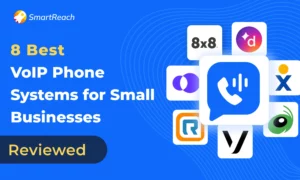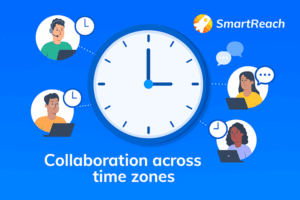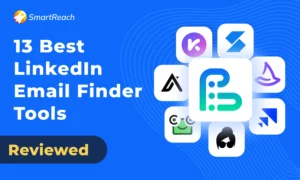Scaling Customer Success in 2024 — The Complete Guide
Customer success is no longer a reactive term focused on mitigating churn.
Today’s CS experts understand customer success is a proactive strategy to cultivate customer loyalty and drive significant business growth. According to a study by Totango, 76% of customer success teams now consist of more than ten members, and a 27% increase has been noticed since 2020.
By prioritizing customer needs and leveraging effective methods, your business can unlock many benefits, such as maximizing customer LTV and establishing a competitive edge.
This guide explores strategies for scaling customer success in 2024. We’ll explore proven methods for personalizing communication at scale, optimizing resource allocation, and building a customer-first culture.
Let’s get right into it.
Advantages of Scaling Customer Success
First, let’s understand the reasons to scale customer service success:
1. Increased Customer Retention and Reduced Churn
A modest 5% rise in customer retention rates can result in a profit boost ranging from 25% to 95%.
Still, many businesses continue to overlook the importance of customer retention. The majority have no idea how many customers they’re losing or the potential revenue impact it causes.
This oversight can lead to several negative consequences, including increased customer acquisition costs, as it is typically more expensive to attract new customers than to retain existing ones. Additionally, high churn rates can damage a company’s reputation, leading to negative reviews and decreased brand loyalty, which can further hinder growth and profitability.
By scaling customer success efforts, companies can actively monitor and enhance customer experiences, leading to increased retention and reduced churn.
2. Increased Customer Lifetime Value
Customer success goes beyond simply preventing churn.
It entails a long-term perspective of interacting with your customers to reap mutual benefits. Understanding their needs and exceeding their expectations can encourage them to not only stay but also spend more time with your business.
By investing in scalable customer success strategies, businesses can enhance the overall customer experience, leading to increased Customer Lifetime Value (CLV). When customers feel valued and supported, they are more likely to purchase additional products or services, renew subscriptions, and even recommend the company to others.
3. Improved Brand Loyalty and Customer Advocacy
Happy customers are your biggest brand ambassadors.
86% of one-time customers become long-term brand ambassadors through exemplary customer service.
When customers have consistent positive experiences with a brand, they are more likely to develop a strong emotional connection and trust. This trust not only leads to repeat business but also transforms satisfied customers into enthusiastic advocates who willingly promote the brand within their networks.
4. Valuable Customer Insights
By actively listening to customer feedback, you can identify areas for improvement and develop products and services that better meet their evolving requirements.
Scaling customer success efforts enables businesses to gather and analyze vast amounts of customer data, providing deep insights into customer behaviors, preferences, and pain points. This information is invaluable for making informed decisions and tailoring offerings to meet customer needs effectively.
Additionally, leveraging data engineering services can significantly enhance your ability to manage and utilize this customer data. By integrating these services, you can ensure your data pipelines are efficient, reliable, and capable of supporting advanced analytics and machine learning models.
This not only helps in refining customer success strategies but also in driving more personalized and impactful customer interactions.
Strategies for Scaling Customer Success
You know that customer retention matters. And scaling existing customers is easier and more cost-effective.
Now, let’s see what successful customer success looks like in practice—
1. Separate the Customer Service Team from the Customer Success Team
Building a distinct CS team from customer success is needed to define clear roles and responsibilities, establish handoff points, and foster collaboration and communication.
Let’s discuss all of them in detail—
- Define Clear Roles and Responsibilities:
A well-defined separation starts with establishing clear roles and responsibilities for each team.
Customer Service focuses on resolving immediate customer issues, answering product-related questions, and providing reactive support. This further includes dealing with technical issues, resetting passwords, and handling billing questions.
Customer success focuses on actively engaging customers, monitoring customer well-being, promoting product usage, and increasing CLV.
Customer service representatives can become experts at resolving common issues quickly and efficiently. At the same time, customer success managers can focus on strengthening long-term partnerships by studying ways to attach customers to the service.
Establish Clear Handoff Points:
If multiple teams are involved in your customer service, it is essential to define the transition points so that the customer does not experience disruptions in interacting with your business
Clear handoff points ensure that customers receive seamless support even when their inquiries require escalation or involvement from different departments. Without clear handoffs, customers may experience delays, repetitive explanations, or even dropped issues, leading to frustration and dissatisfaction.
For example, a ticketing system allows customers to submit problems and difficulties, which are initially recorded and handled by the support team. Furthermore, to ensure proper routing and efficient handling, these submissions are often categorized using Jira ticket types, such as bug, feature request, or support request
If an issue is complex or pertains to a specific account concern, the ticket can be escalated to the customer success team or another specialized department. This system ensures that every customer query is tracked, documented, and appropriately addressed by the right team.
By establishing clear protocols for when and how a ticket is handed off, businesses can maintain consistent communication and service quality. Customers will appreciate not having to repeat their issues multiple times, and they’ll benefit from faster resolutions as their problems are addressed by the most qualified team members.
Foster Collaboration and Communication:
While separate, the customer service and customer success teams should not operate in silos.
Effective collaboration and communication are essential for a holistic understanding of the customer journey.
Here are some ways to achieve this:
- Maintain a centralized knowledge base accessible to both teams.
- Schedule regular meetings between teams to share customer insights, trends, and feedback.
- Consider cross-training opportunities for both teams to build empathy and understanding of each other’s roles.
Leverage Technology and Automation:
Automating repetitive tasks and providing self-service options to customers allows your CS team to dedicate their attention to more strategic and high-value interactions.
Here’s how:
Implement Robust Self-Service Options:
A comprehensive self-service portal empowers customers to find answers independently, reducing the burden on your CS team. This portal should include:
- FAQs: Create a repository of frequently asked questions with clear and concise answers.
- Knowledge Base Articles: Develop detailed articles addressing common customer issues and troubleshooting steps.
- Video Tutorials: Use video tutorials to visually showcase the features and capabilities of your product.
- Searchable Knowledge Base: Embed a strong search feature in the self-service portal for customers to quickly locate the information they require.
- Utilize Automated Workflows:
Automating repetitive tasks streamlines workflows and improves efficiency for both your CS team and your customers.
Consider automating the following things:
- Onboarding Emails: Introduce automatic flows when the customer subscribes to your product to maintain the quality of onboarding.
- Churn Risk Alerts: Automate triggered messages that keep the CS team informed when customers plan to cancel subscriptions or opt out of email campaigns.
- Task Reminders: Make use of notifications for automated tasks that require interaction with customers and the associated deadlines.
Nevertheless, automation is a resource, not a substitute for human engagement. You must ensure a balance between efficiency and the human touch, which will lead to successful customer success.
Invest in Metrics and Tracking:
Scaling customer success requires a data-driven approach. There are four metrics you must measure to grow your customer base—
Customer Satisfaction Scores (CSAT):
CSAT, or Customer Satisfaction Score, is a key performance metric used to gauge the level of satisfaction customers have with a company’s products, services, or experiences. Low CSAT scores highlight areas where interactions with your teams might be falling short of customer expectations.
Customer Lifetime Value:
CLV, or Customer Lifetime Value, is a metric that estimates the total revenue a business can expect to earn from a single customer account throughout their entire relationship with the company. It helps businesses understand the long-term value of their customers and make informed decisions about marketing strategies, lowering customer acquisition costs and customer retention efforts.
Customer Churn Rate:
Customer churn refers to how quickly customers discontinue using your product or service within a set period of time. Tracking your customer churn rate helps you assess how well you are retaining customers and identifies areas for improvement.
Return on Advertising Spend:
Return on Advertising Spend (ROAS) measures the revenue generated for every dollar spent on advertising. It is a critical metric for understanding the effectiveness of your marketing campaigns. By tracking ROAS, you can determine which advertising efforts are driving the most revenue and adjust your strategies accordingly. High ROAS indicates successful campaigns that efficiently convert spending into profits, while low ROAS highlights areas needing optimization.
2. Use Customer Feedback
Customer feedback is a valuable resource of information for businesses, particularly when it comes to increasing customer satisfaction.
Through organized collection, analysis, and addressing of customers’ feedback, you can enhance customer loyalty and retention.
Here are some ways you can collect customer feedback—
- In-App Surveys: In-app surveys allow you to insert brief and simple questionnaires about the product or service in order to quickly gather people’s feedback on specific aspects.
- Customer Satisfaction (CSAT) Surveys: CSAT surveys sent through email or web forms are used periodically to assess customer satisfaction levels.
- Net Promoter Score (NPS) Surveys: Use NPS surveys to gauge customer loyalty and understand which customers are using your product or not.
- Social Media Monitoring: Monitor social media to track trends, hashtags, and discussions to gauge customer sentiment and their interactions with your product and customer satisfaction.
- Direct Communication Channels: Promote transparency by offering customers various options for contacting your team, such as email, live chat, or phone assistance from a toll free number.
3. Personalize Customer Experience
One size doesn’t fit all.
This is the motto of all marketing and customer success, too.
Personalization is key to success in a world where everything is easily accessible. You can use the data collected to personalize communications like emails and website content based on past behavior and demographics.
The benefits are clear: happier customers who are more engaged and likely to become loyal, high-value customers.
But it’s not just about UX personalization, UI is important as well.
To personalize at scale, use automated CX software and focus on key touchpoints throughout the customer journey. Track and analyze results to ensure your personalization efforts are hitting the mark.
4. Create a Resource Center to Support Customers
A customer resource center empowers customers and reduces support burdens.
To build one, first define your target audience and goals. Then, curate high-quality content in various formats (written guides, videos, etc.) that are clear, concise, and searchable.
Organize this content logically with categories, tags, and a user-friendly navigation system.
Promote the resource center throughout your website and marketing materials. Finally, track user engagement, gather feedback, and continuously improve your content based on this data.
Conclusion
No product in the market is unique. You will find tens of competitor sites that provide the exact product or service as you.
With so many options right at your customer’s fingertips, customer success is something that can help you leave a mark.
Strategies like defining clear roles and using automation to create personalized customer experiences will help you increase your customer base while building loyal customers.
By prioritizing customer success, you not only differentiate your brand but also foster long-term relationships that drive sustained growth and profitability.




